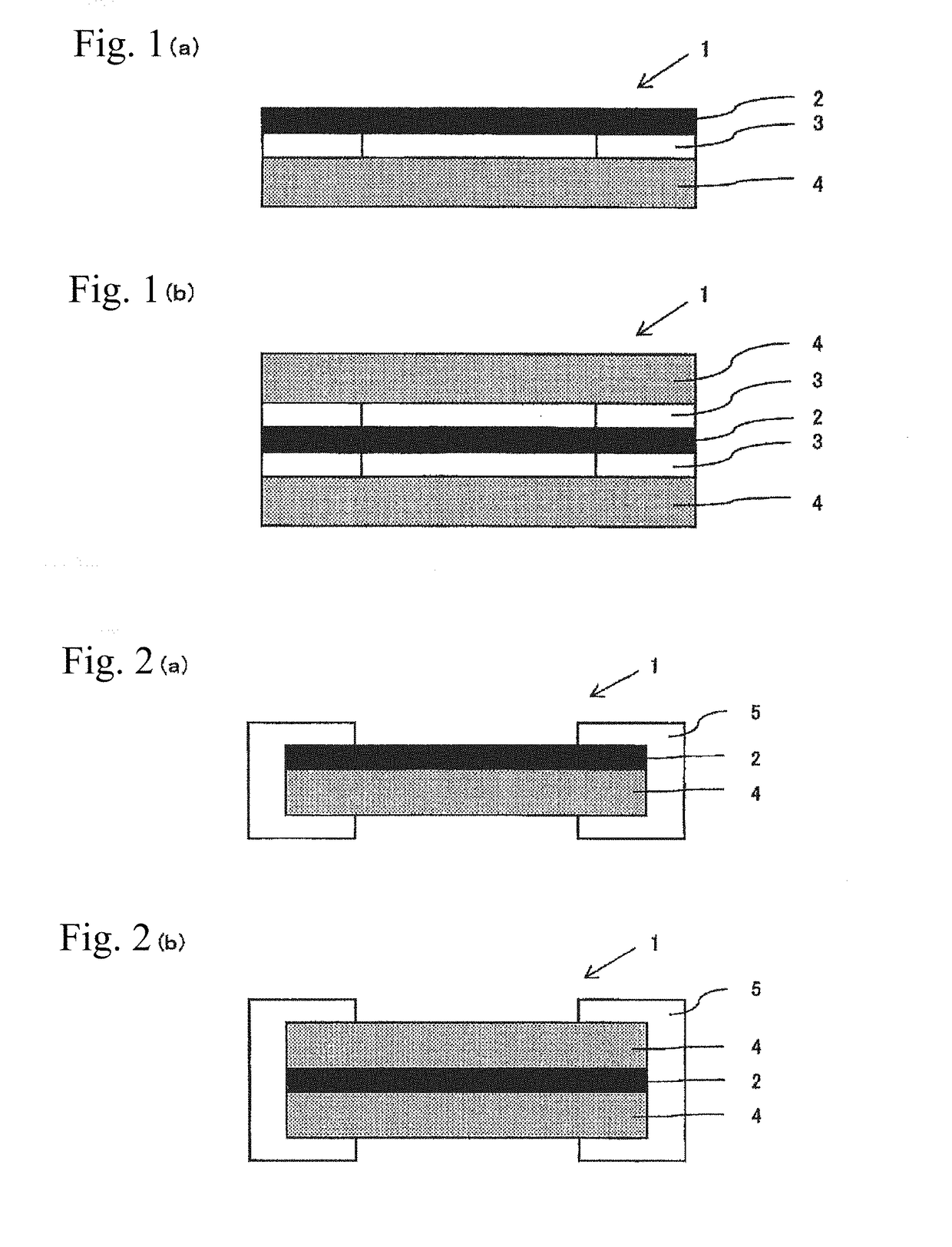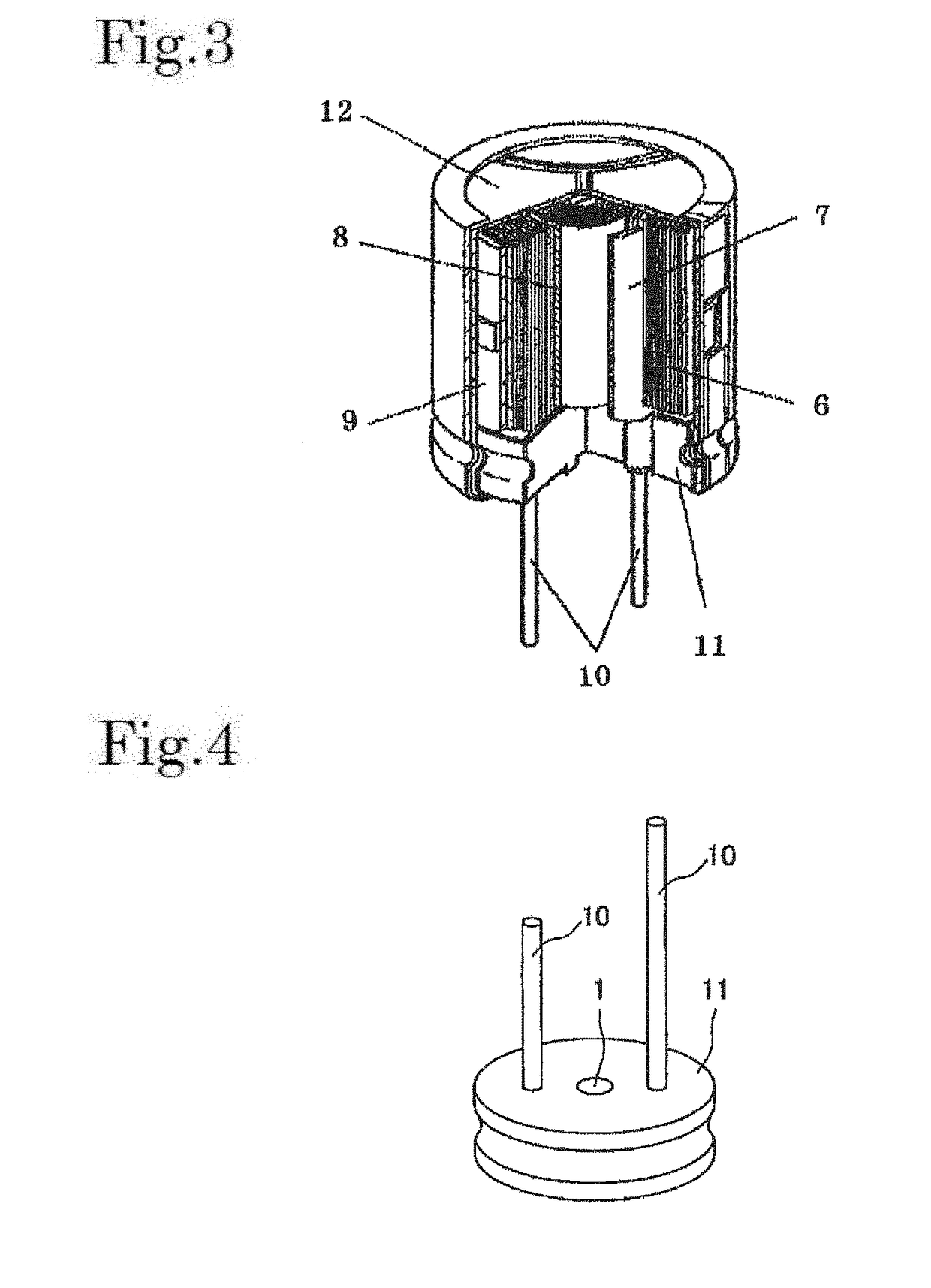Electrochemical element
a technology of electrochemical elements and elastomers, which is applied in the direction of secondary cell servicing/maintenance, cell components, sustainable manufacturing/processing, etc., can solve the problems of inability to maintain the function of pressure regulator films, the risk of outer cases being ruptured by internal pressure increase, and the tendency to become brittle, so as to reduce the internal pressure, the effect of preventing the pressure of hydrogen gas generated inside the electrochemical element and reducing the internal pressur
- Summary
- Abstract
- Description
- Claims
- Application Information
AI Technical Summary
Benefits of technology
Problems solved by technology
Method used
Image
Examples
production example 1
[0079][Preparation of Pd—Au Alloy Layer by Rolling Method (Content of Au: 30 mol %)]
[0080]The raw materials Pd and Au were each weighed so that the content of Au in an ingot became 30 mol %, charged into an arc melting furnace equipped with a water-cooled copper crucible and subjected to arc melting in an Ar gas atmosphere under atmospheric pressure. The obtained button ingot was cold-rolled to a thickness of 5 mm using a two-stage rolling mill having a diameter of 100 mm to obtain a rolled sheet material. Then the rolled sheet material was placed in a glass tube and the both ends of the glass tube were sealed. After reducing the inside pressure of the glass tube to 5×10−4 Pa at room temperature, the temperature was then raised to 700° C. and the glass tube was allowed to stand for 24 hours, followed by cooling to room temperature. By this heat treatment, the segregation of Pd and Au in the alloy was removed. Then, the sheet material was cold-rolled to 100 μm using a two-stage rolli...
example 1
[0081]An aluminum electrolytic capacitor was produced using the hydrogen-releasing film produced in Production Example 1 and a kraft paper having a total sulfur component content of 34 ppm as a separator.
example 2
[0082]An aluminum electrolytic capacitor was produced using the hydrogen-releasing film produced in Production Example 1 and a kraft paper having a total sulfur component content of 69 ppm as a separator.
PUM
| Property | Measurement | Unit |
|---|---|---|
| temperature | aaaaa | aaaaa |
| thickness | aaaaa | aaaaa |
| thickness | aaaaa | aaaaa |
Abstract
Description
Claims
Application Information
 Login to View More
Login to View More - R&D
- Intellectual Property
- Life Sciences
- Materials
- Tech Scout
- Unparalleled Data Quality
- Higher Quality Content
- 60% Fewer Hallucinations
Browse by: Latest US Patents, China's latest patents, Technical Efficacy Thesaurus, Application Domain, Technology Topic, Popular Technical Reports.
© 2025 PatSnap. All rights reserved.Legal|Privacy policy|Modern Slavery Act Transparency Statement|Sitemap|About US| Contact US: help@patsnap.com


